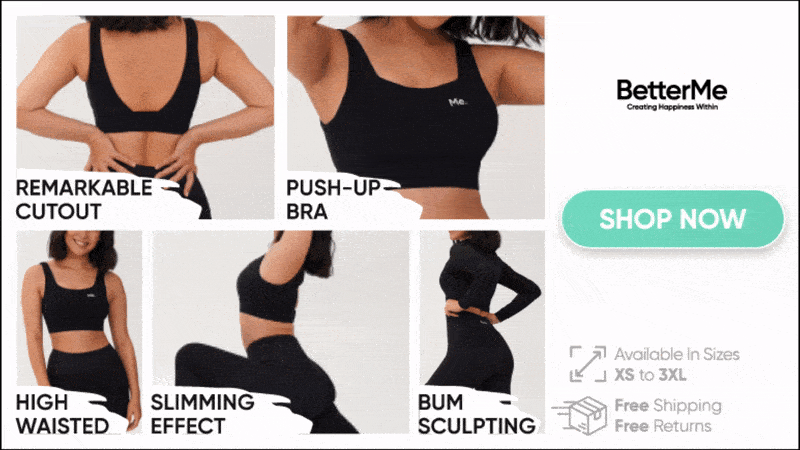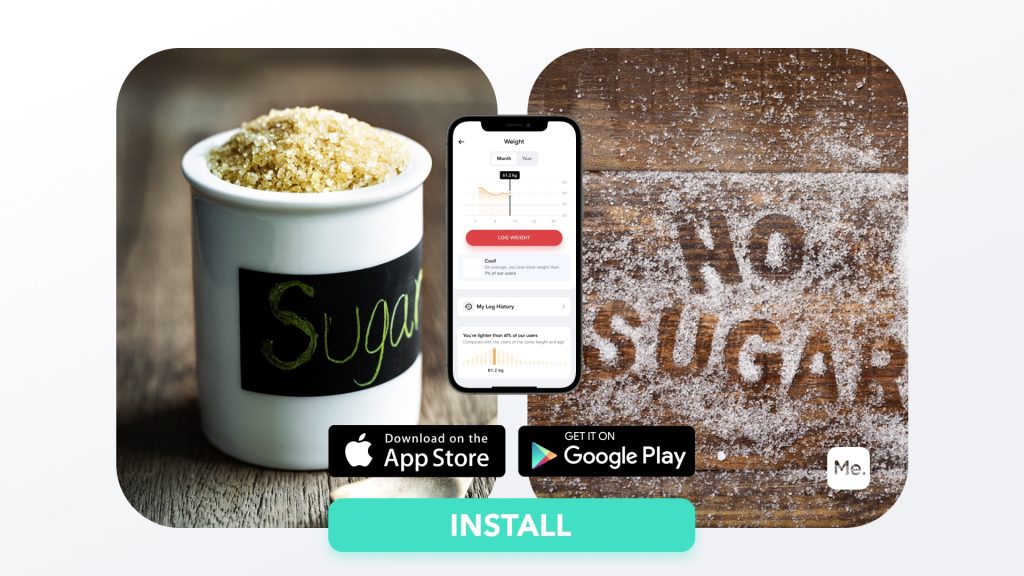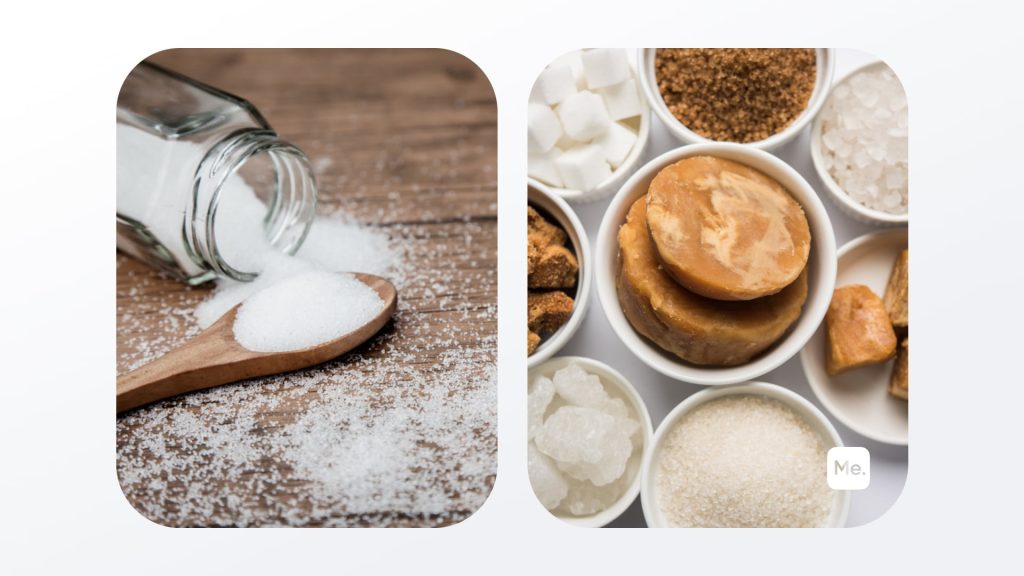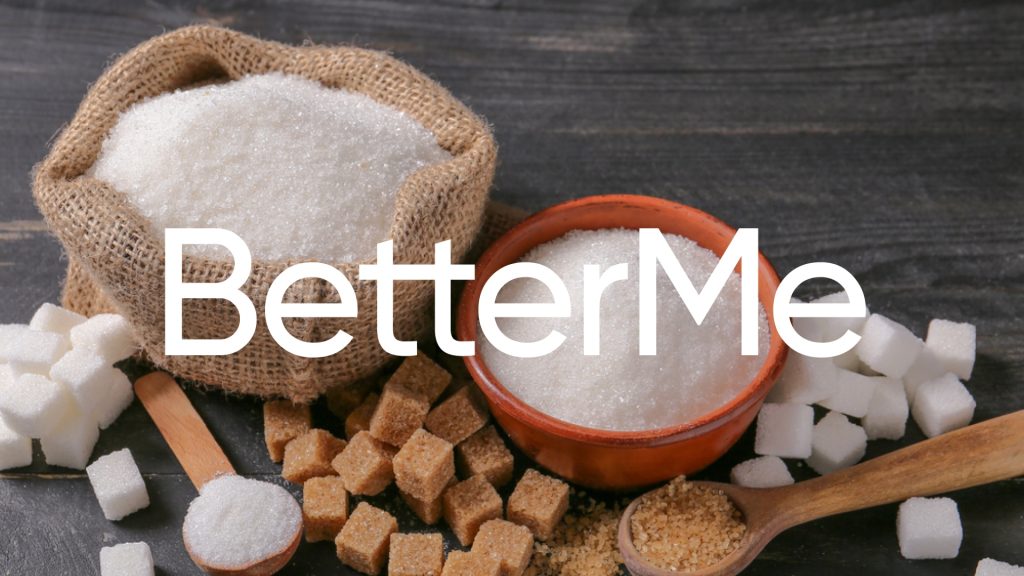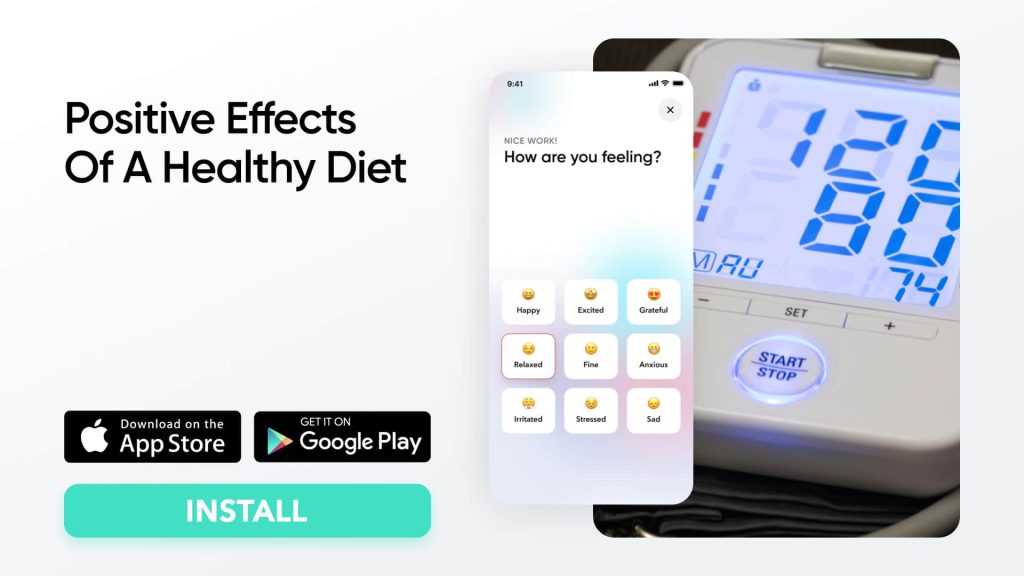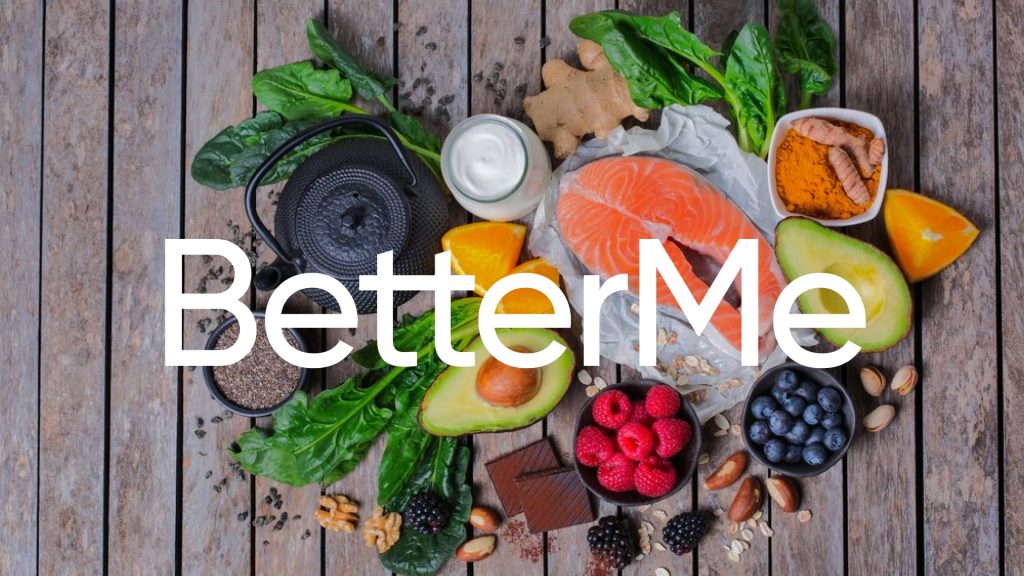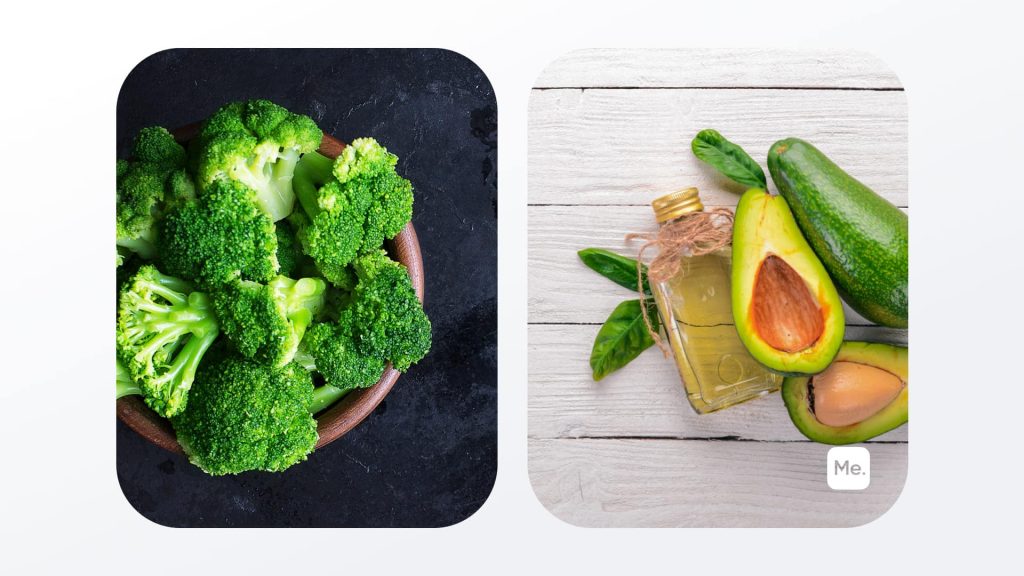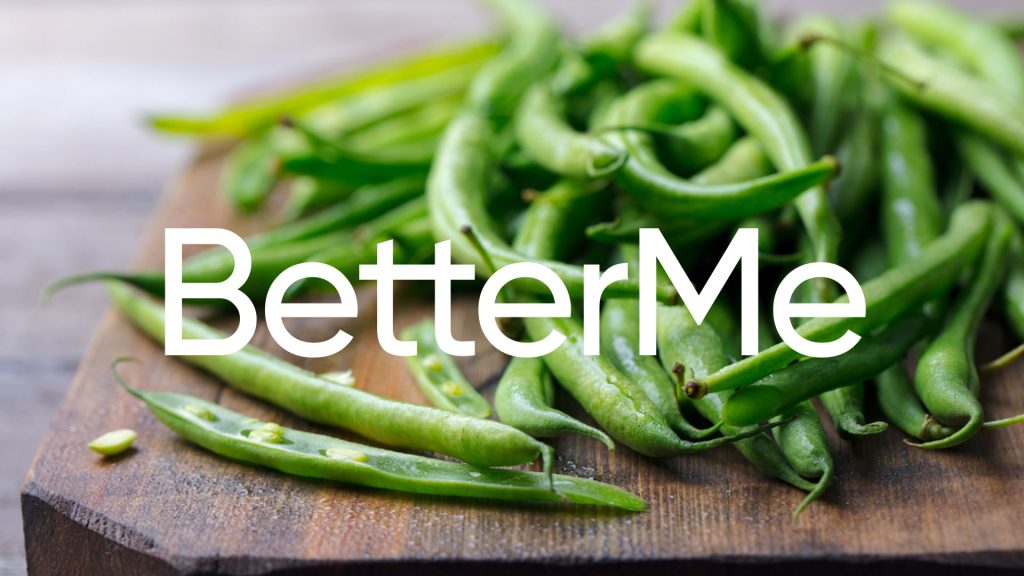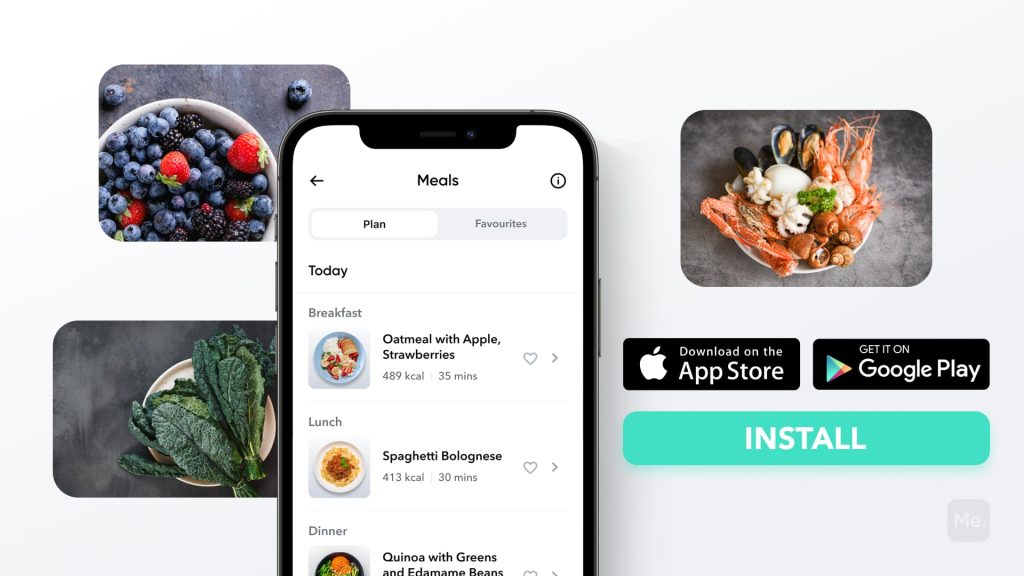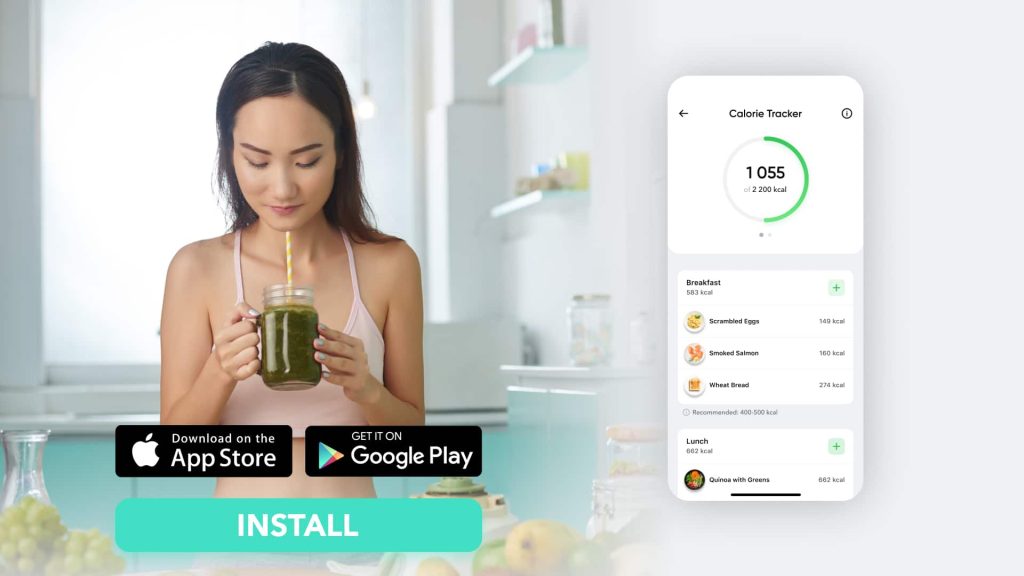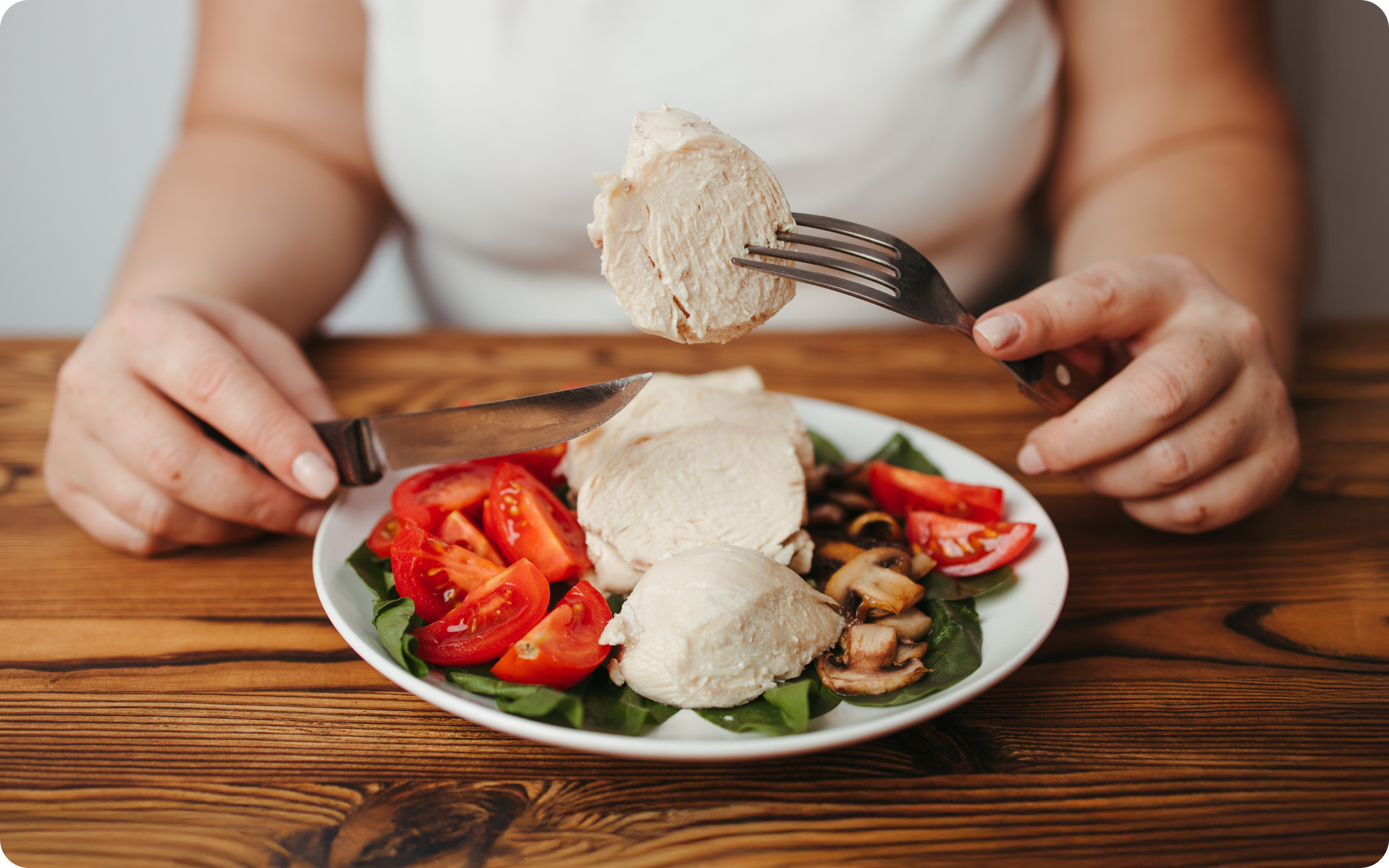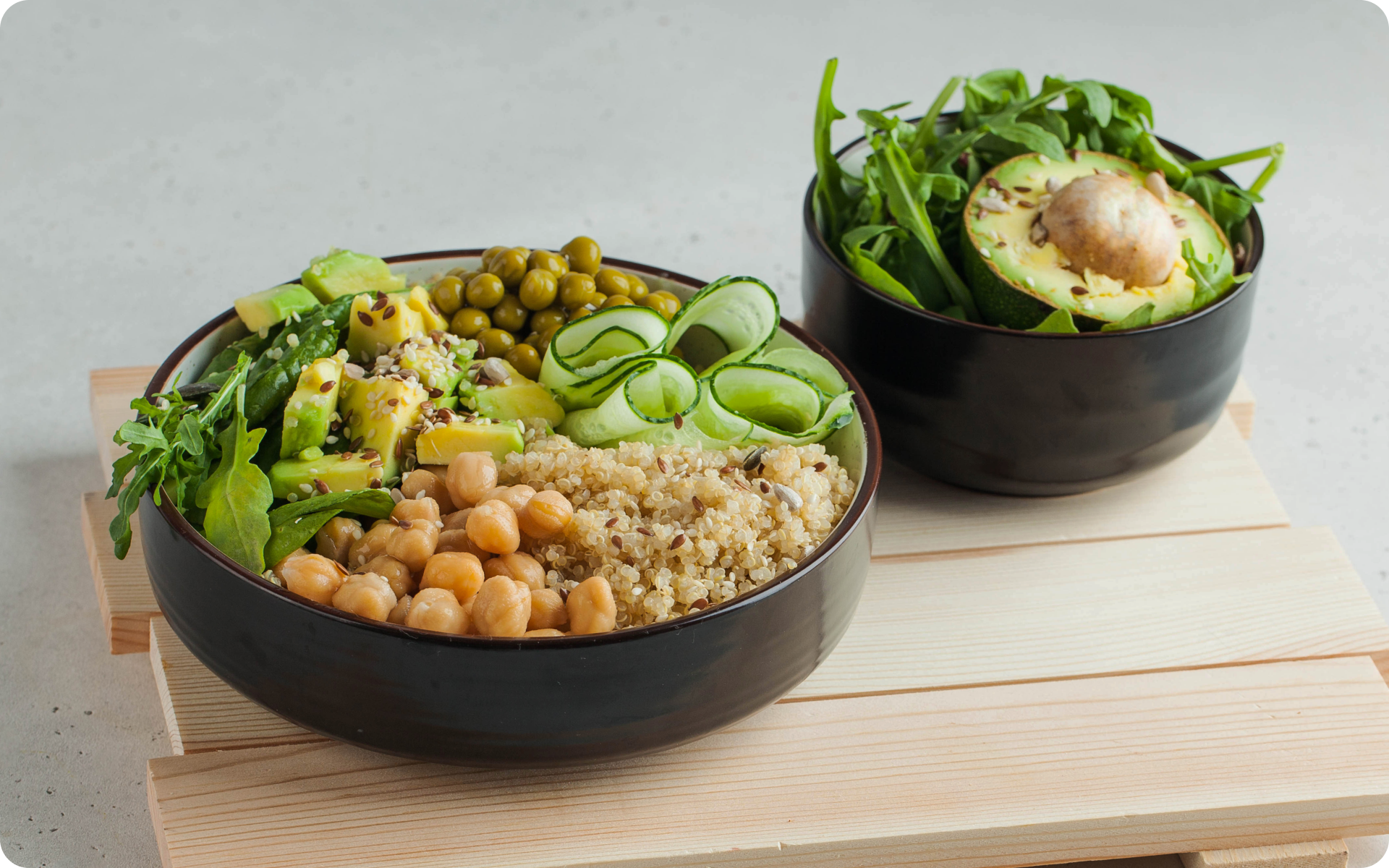What Foods Do Not Contain Sugar?
It is often stated that sugar is harmful to your health. Americans regularly over-consume sugar, which causes several widespread health issues. That’s why many try to restrict sugar consumption or even eliminate it altogether. This intention led to the emergence of diets calling themselves “no sugar”. What is the essence of this approach? Can you consume sugar in a healthy amount or you should try to get rid of it completely? This article includes all necessary information on a no sugar diet and no sugar diet food list for you to keep your sugar levels on track.
What Is Sugar?
When someone mentions sugar, most people instantly think of the white grains or cubes in a bowl on their dining tables. In reality, this is not the only form of sugar existing, far from it.
Sugar is a basic building block of carbohydrates. Aside from fiber, all forms of carbs are made of what is known as simple sugars – glucose, fructose, and galactose. Simple sugars, often found in fruits or sweets, can bond with each other to form complex carbs, for example, in potatoes or grains. In the end, the body breaks down all carbohydrates from foods into glucose, which is transported through the bloodstream and delivered to cells to use for energy production. So, sugar as such is not harmful, it is essential for normal body functioning. But overconsumption of sugars, especially simple ones, can lead to many harmful consequences.
Read More: No-Sugar Diet: All You Need To Know To Get Started
How Does Sugar Affect Your Body?
As mentioned before, all carbs are turned into glucose. But which effects does overconsumption of carbs have?
When glucose is not needed by your body immediately, it is stored in the body as glycogen in two places: in the liver and the skeletal muscles (23). Your glycogen stores provide you with vital energy during physical activity and are replenished when you eat a meal full of carbs. Glycogen levels can become saturated when you consume too many carbs.
If this happens, your body converts excess carbohydrates to fat for long-term energy storage leading to weight gain. Conversely, if you have insufficient carbohydrate intake or stores, the body will consume protein for energy to work, which also means that you’ll lose muscle — which is indeed unhealthy.
The Dietary Guidelines for Americans states that carbohydrates should comprise 45 to 65% of total calories and a limit on added sugars to no more than 10% of total calories for your diet to be healthy (21). If you consume too few carbs, you may suffer from constipation and bad breath. Lack of carbs in the body may lead to kidney failure and kidney stones in more severe cases. Excess consumption of carbs may also lead to malnutrition if accompanied by decreased protein and fat intake.
Furthermore, a 2016 study (16) showed that excess sugar uptake can lead to cellular dysfunction and inflammation in vitro. What’s more (1), a review in the Journal of the American Medical Association found a pronounced correlation between consumption of added sugars and increased risk for cardiovascular disease. To make it worse, most adults consume far more added sugar than what’s recommended by health experts.
However, there exists a crucial difference between simple carbs (or sugars) and complex carbs, which makes the latter more preferable for a healthy diet.
Simple And Complex Carbs: The Difference
People oftentimes distinguish “good” and “bad” carbohydrates:
“Bad carbs” refer to products that contain mainly simple carbohydrates and/or added sugars. The most obvious examples of those foods are sugary drinks and candies, as well as white bread or cakes. When you consume simple carbohydrates, they digest much faster than complex ones causing blood glucose level spikes. Those sugar spikes trigger an immediate insulin response that strives to lower excess blood glucose as fast as possible, turning it into stored fat and causing what is often called a “sugar crash.”
Because of sugar crashes, you become hungry sooner, thus eating more and gaining weight. What’s more, sugar crashes can cause mood swings and fatigue (2).
When people mention “good carbs”, they’re usually talking about complex carbohydrates. The crucial difference from bad carbs is that these break down and raise blood glucose levels slowly and gradually (19, 20). They are also a much better choice for weight loss purposes and for blood sugar control. Complex-carb foods usually contain much more fiber, which is helpful for weight loss as well as digestive health. Examples of foods filled with complex carbs are oatmeal, brown rice, and sweet potatoes.
As you can see, carbs as such are not as harmful as such. Sugar is a powerful source of energy, and your body needs it to function properly. Yet some carbs, like complex ones, are more healthy and suitable for weight loss and more beneficial for your health. Thus, when searching for a no-carb no sugar food list, you need to understand that eliminating carbs from your diet entirely will not lead to positive results. Instead, you need to stop consuming, first and foremost, processed foods with added sugars. Those items contain much more sugar than you need and have no nutritious fiber.
A Healthy Diet: Basics
The no sugar diet is, essentially, a subdivision of a healthy diet focusing on the minimization of consumption of foods high in sugar. It borrows much of common sense from the rules of healthy dieting. That is why, before understanding the logic of no-sugar diet and choosing foods from a no sugar diet food list, you need to grasp the basic rules of healthy eating. This section will preclude the risks of extreme carb limitations harmful to your body.
In essence, a balanced diet is a diet that provides your body with all the crucial nutrients it needs to function flawlessly without disturbing you. Balanced diets are made in a way that allows you to stick to them continuously, lose weight, and improve your health at the same time. A balanced diet is linked to a number of positive effects, including the reduction of risks of diabetes, high blood pressure, and cancer. USDA recommends you to base your daily menu on fruits and vegetables, as well as whole grains, lean protein, low-fat dairy, nuts, and legumes (21). As you can see, these elements of a healthy diet are, generally, quite low in sugar.
When it comes to weight loss, progress is made by inches, not miles, so it’s much harder to track and a lot easier to give up. BetterMe app is your personal trainer, nutritionist, and support system all in one. Start using our app to stay on track and hold yourself accountable!
Positive Effects Of A Healthy Diet
Lots of people shy away from following a healthy diet because they think it’s too demanding and stressful. But before deciding to get back to your bag of chips, consider these important benefits of a nutritious dietary plan you can follow.
-
Decreases LDL Cholesterol And Optimizes Blood Pressure
Hypertension and high LDL cholesterol levels are one of the leading causes of heart disease around the world. If you stick to an unhealthy diet full of salt and animal fat, you risk gaining excess pounds, damaging the health of your whole body, and accelerating aging.
-
Smoothens Your Skin
Your skin condition is always a reflection of the overall health of your body. That is why a balanced diet is prescriptive when dealing with acne, pimples, when trying to moisturize the dryness, and create a healthy glow. No crèmes and masks will solve the problem on their own – a healthy diet is a must.
-
Boosts Your Energy Levels
In this stressful world, lots of people are suffering from chronic fatigue and low energy. There are various causes of this problem, but if you often feel super drowsy and ready to fall asleep, regardless of how long you slept, try to alter your daily menu. A healthy diet will fill you with energy and readiness to meet the challenges of the day.
-
Improves Heart Health
Another vital reason to start eating well is to maintain or improve your heart health. The heart is the most vital organ of your body. And you need to make sure you’re treating it well by reducing sugar, salt, and saturated fats intake, and increasing the consumption of whole foods, fruits, and vegetables. Heart disease might look like a faraway problem if you’re young, but you’ll thank yourself later.
-
Helps You Lose Weight And Maintain It In The Proper Range
Weight loss is one of the main reasons to look for a healthy diet. Indeed, a huge number of those aiming to modify their menu do it to melt excess pounds. A proper diet is a fundamental element of any weight loss program, and it will help you avoid many diseases in the future.
Read More: Hot Yoga Weight Loss: Become The Fittest, Leanest, And Strongest Version Of Yourself
What Is The No-Sugar Diet?
If you’re currently consuming sugar in the alarming amounts of an average American, you don’t need to follow a low-carb diet for now. Just eliminate sugary items from your menu, to begin with. Foods highest in sugar content and lowest in nutritional value are processed products with added sugars. Sweets, donuts, cakes, potato chips, sugary drinks, and sweetened yogurts – you need to tell them goodbye.
If you actually do that, you will cut down a huge amount of daily sugar consumption as well as calories. Those are the most sugary and useless carbs that exist. But not all carbs are equal, as mentioned before. There is a spectrum of carbs ranging from most to least sugary, and from most to least nutritious. In this range, the sugariest products are at the top, and the sugar content drops the further down is the category. The ones at the top are also usually very high in calories while low in nutrients, and the balance improves as you go down the list.
What Is The Best Way To Cut Sugar From My Diet?
“What foods should I limit?” is the first question arising when people contemplate following a no sugar diet. The truth is that you’re not supposed to eliminate everything that contains a bit of sugar in it. Begin with decreasing the consumption of the first category of carbs and continue further when your sugar cravings become milder (22). As a rule, try to replace an item in the higher category you consume with the product from a lower category. For a no sugar diet food list, look at the lower categories.
- Foods containing added sugar like sweets, pastries, sweetened drinks (sodas and high-sugar energy or sports drinks), and sweetened foods like yogurt with fruits
- Refined grains such as white bread (and other low-fiber bread), white rice, regular pasta, crackers, bagels, and baked goods
- Whole grains/starches such as brown rice, oats, whole-grain bread, and quinoa
- Fruits such as apples, bananas, peaches, pineapples, pears, berries, etc.
- Starchy vegetables such as carrots, potatoes, pumpkin, squash, beets, etc.
- Green vegetables like asparagus, broccoli, cabbage, lettuce, spinach, Brussels sprouts, etc.
In general, your focus should be on reducing your consumption of foods from the first two categories. Whole grains and starches are generally very beneficial for your health, and you don’t need to avoid them if you wish to lose weight and live healthily.
No Sugar Diet Food List
Here is the list of foods containing next to no sugar (22):
- Animal proteins (beef, chicken, turkey, pork, fish, etc.)
- Unrefined oils (avocado, coconut, olive, etc.)
- Butter, ghee, and cheese
- Avocado
- Eggplant
- Green beans
- Kelp noodles
- Zucchini noodles
- Mushrooms
- Spinach
- Watercress
- Radish
- Kale
- Celery
- Broccoli
- Bell pepper
- Cucumber
- Asparagus
- Tomato
- Salsa
- Coffee
- Tea
- Watermelon
- Lemons/limes
- Whole milk
- Berries
And here are the benefits of some of them for you to choose the best:
-
Seafood
When someone says “protein” the first thing that comes to mind is meat. Yet you need to consume animal proteins with caution. It’s best to choose lean meat when you do so and avoid overconsuming it, as eating too much red meat is connected to higher risks of heart disease and stroke (14). By contrast, seafood is an amazing natural source of vitamins and minerals. B-complex vitamins, vitamin D, and vitamin A. B-complex vitamins perform a host of different functions. They have a significant impact on energy production, metabolism, concentration, and physical appearance. Some types of fish like salmon are incredibly rich in vitamin A. This vitamin protects your vision and improves your resistance to diseases. Another vitamin commonly found in some seafood is vitamin D, which ensures healthy bone growth, absorption of calcium, and boosts immunity.
While seafood is good enough to be low in saturated fat and high in protein, the biggest gem is its richness in omega-3 acids. There have been many studies on the benefits of omega-3 acids, but they’re most well-known as a guardian of heart health (12). Seafood can significantly reduce the risks of different cardiovascular diseases. What’s more, the nutrients in seafood help maintain eyesight, rejuvenate your skin, may boost your intellectual abilities, and lower the risk of depression (5).
-
Olive Oil
It is crucial to check that the oils you buy aren’t refined. For instance, refined olive oil lacks many nutrients and antioxidants. By contrast, the natural extraction process used to produce unrefined (or extra virgin) olive oil ensures it retains all the nutrients and antioxidants from the olives. Extra virgin olive oil contains over 30 different types of phenolic compounds, which are very strong antioxidants. The composition of fats in extra virgin olive oil, which is mostly monounsaturated, is also a significant contributor to its healthiness.
That is because a diet high in monounsaturated fat is linked to positive effects on markers of cardiovascular disease like heart disease and stroke. Also, monounsaturated fats may help reduce chronic inflammation, blood pressure, cholesterol levels, and blood glucose levels (9, 8, 18).
-
Avocado Oil
Avocado oil is the natural oil that people get from the pulp of an avocado. Its first benefit comes from the fact that almost 70% of avocado oil consists of heart-healthy oleic acid, a monounsaturated omega-9 fatty acid (25). This fatty acid is also a vital component of olive oil, and it is believed to be responsible for its health benefits too. Avocado oil has been shown to have positive effects on cholesterol levels (4), along with olive oil, which was found to be the most efficient in upping the level of HDL, also known as the “good” cholesterol.
Avocado oil is a good source of lutein, a carotenoid your eyes contain. It functions as an antioxidant which is a wonderful help for your eyes strained by constant computer screen exposure. If you consume plenty of lutein you may reduce the risk of cataracts and macular degeneration, which are common age-related eye diseases (17). Other potential benefits of avocado oil include protection from arthritis, improved skin condition, and prevention of gum disease (7, 10, 11).
-
Kale
It is one of the most nutrient-dense foods on the planet. Kale, like other leafy greens, is very high in antioxidants, which include beta-carotene and vitamin C, as well as different flavonoids and polyphenols. This is substantially higher in vitamin C than most other vegetables, containing about 4.5 times much as spinach. In fact, kale is one of the best sources of vitamin C in the world.
But some antioxidants have other crucial functions. Some of those incredibly useful elements are flavonoids quercetin and kaempferol, which are found in quite large amounts in kale. These substances have been profoundly studied in test tubes and animals.
The results are that they have strong heart-protective, blood pressure-lowering, anti-inflammatory, anti-viral, antidepressant, and anti-cancer effects (3).
What’s more, kale is high in vitamin K, can lower cholesterol levels, and contains various cancer-fighting substances.
-
Green Beans
Green beans are powerful sources of lutein and zeaxanthin, in addition to other healthy compounds. These compounds can help lower the risk of certain cancers and heart disease, improve vision, and even help prevent certain birth defects (13).
A high intake of green beans can also lower your risk of colorectal cancer. The number of bioactive compounds that help protect against cancer is incredibly rich in green beans. Plus, their non-digestible carbs are fermented by gut bacteria, causing the anti-inflammatory action of green beans.
Furthermore, green beans also have a low glycemic index, meaning their impact on blood sugar is small, which can be important for people with diabetes. What makes them even better for people with this condition, green beans are non-starchy, so if you were looking for a no sugar no starch food list, green beans should definitely be in it. Not to be misunderstood: starchy vegetables are completely healthy, but they may sometimes need to be treated with caution by people with diabetes.
Besides, green beans contain saponins, gamma-tocopherol, and phytosterols. These are all compounds with anti-carcinogenic properties.
If you wish to free yourself from all the extra pounds that have been weighting you down for way too long, start using the BetterMe app and overhaul your entire life!
How To Detect Sugar In Your Food?
A no sugar diet food list outlined above is never complete. That is why, when shopping, you always bump into this or that product wondering whether it is low or high in sugar. Identifying this might become a difficult task, as sugar disguises itself under different names.
There are lots of different ways added sugar can be listed on ingredients labels:
- sucrose
- glucose
- fructose
- maltose
- fruit juice
- molasses
- hydrolysed starch
- invert sugar
- corn syrup
- honey, etc.
You can look at nutrition labels to understand whether a product is high or low in sugar (15). High in sugar product contains 22.5 g or more of total sugar per 100 g, while low in sugar product contains 5 g or less of total sugar per 100 g.
You can find a color-coded system on some packages. This system chooses foods that are lower in sugar, salt, and fat. Fill your shopping cart with more “greens” and “ambers” and fewer “reds”.
To be able to follow a no sugar diet food list, you need to understand how to cut down your sugar intake steadily and successfully. Follow these recommendations from the American Heart Association (24).
Tips For Cutting Down On Sugar
- Toss the table sugar (white and brown), syrup, honey, molasses, and other sweeteners. Cut back on the amount of sugar added to foods you consume regularly like cereal, pancakes, coffee, or tea. Try cutting the usual amount of sugar you add to your coffee by half and go further from there.
- Eliminate soda. Water is best for your health and weight loss, but if you want something sweet, opt for diet drinks. Regular sweetened beverages are extremely high in sugar and will thwart your efforts.
- Opt for fresh fruits. Whole and fresh fruits are the best for you, but if you have no other choice, choose fruit canned in water or natural juice. In particular, avoid fruit canned in syrup, especially heavy syrup. Drain and rinse your fruits in a colander to remove excess syrup or juice.
- Add fruit. Instead of adding sugar to your cereal or oatmeal, try fresh fruit like bananas or strawberries, or dried fruit like raisins, cranberries, or apricots.
- Cut your serving back. If you love baking, cut down a sugar called for in your recipe by one-third to one-half. Often you won’t notice any substantial difference in your cookies or cakes.
- Opt for extracts. Instead of adding sugar as written in the recipe, use extracts like almond, vanilla, orange, or lemon.
- Replace it. Make your food taste more vivid by adding spices instead of sugar. For instance, try ginger, allspice, cinnamon, or nutmeg.
- Limit sweeteners with no nutritional value. If you are trying to lose weight, a temporary fix to satisfy your sweet tooth may be with non-nutritive sweeteners. But you need to be careful with them. Make sure that swapping sugary options for non-nutritive sweeteners now doesn’t cause more eating in the future.
Final Thought
To sum up, a no sugar diet food list is actually quite extensive. If you follow it steadily, you can certainly lose weight (as long as you maintain a calorie deficit) and improve your health. Keep in mind that you’re not supposed to eliminate carbs from your diet completely. If you’re looking for a low-carb diet, look through the options Keto diet proposes.
DISCLAIMER:
This article is intended for general informational purposes only and does not address individual circumstances. It is not a substitute for professional advice or help and should not be relied on to make decisions of any kind. Any action you take upon the information presented in this article is strictly at your own risk and responsibility!
SOURCES:
- Added Sugar Intake and Cardiovascular Diseases Mortality Among US Adults (2013, jamanetwork.com)
- Carbohydrate Intake and Overweight and Obesity among Healthy Adults (2011, ncbi.nlm.nih.gov)
- Chemistry and biological activities of flavonoids: an overview (2013, ncbi.nlm.nih.gov)
- Cholesterol vehicle in experimental atherosclerosis 24: avocado oil (2003,ncbi.nlm.nih.gov)
- Dietary fish, n-3 polyunsaturated fatty acid consumption, and depression risk in Japan: a population-based prospective cohort study (2017, nature.com)
- Dietary Guidelines for Americans 2015-2020 (n.d., health.gov)
- Effect of interleukin-1beta on transforming growth factor-beta and bone morphogenetic protein-2 expression in human periodontal ligament and alveolar bone cells in culture: modulation by avocado and soybean unsaponifiables (2006, ncbi.nlm.nih.gov)
- Effects of Monounsaturated Fatty Acids on Glycaemic Control in Patients With Abnormal Glucose Metabolism: A Systematic Review and Meta-Analysis (2011, ncbi.nlm.nih.gov)
- Effects of Olive Oil on Markers of Inflammation and Endothelial Function—A Systematic Review and Meta-Analysis (2015, ncbi.nlm.nih.gov)
- Effect of semisolid formulation of persea americana mill (avocado) oil on wound healing in rats (2013, ncbi.nlm.nih.gov)
- Efficacy and safety of avocado/soybean unsaponifiables in the treatment of symptomatic osteoarthritis of the knee and hip. A prospective, multicenter, three-month, randomized, double-blind, placebo-controlled trial (1997, ncbi.nlm.nih.gov)
- Fish Intake Is Associated With Lower Cardiovascular Risk in a Mediterranean Population: Prospective Results From the Moli-sani Study (2017, ncbi.nlm.nih.gov)
- Green Beans: 10 Impressive Benefits + Nutrition (2019, stylecraze.com)
- Heart Disease (n.d., hsph.harvard.edu)
- How to cut down on sugar in your diet (n.d., nhs.uk)
- Inflammation, glucose, and vascular cell damage: the role of the pentose phosphate pathway (2016, ncbi.nlm.nih.gov)
- Lutein and zeaxanthin and the risk of cataract: the Melbourne visual impairment project (2006, ncbi.nlm.nih.gov)
- Metabolic Effects of Monounsaturated Fatty Acid-Enriched Diets Compared With Carbohydrate or Polyunsaturated Fatty Acid-Enriched Diets in Patients With Type 2 Diabetes: A Systematic Review and Meta-analysis of Randomized Controlled Trials (2016, ncbi.nlm.nih.gov)
- Review of Human Studies Investigating the Post-Prandial Blood-Glucose Lowering Ability of Oat and Barley Food Products (2013, ncbi.nlm.nih.gov)
- Systematic Review: The Effects of Fibre in the Management of Chronic Idiopathic Constipation (2011, ncbi.nlm.nih.gov)
- The 2015–2020 Dietary Guidelines for Americans (2015, choosemyplate.gov)
- The No-Sugar Diet Plan: Food List & More for Getting Results (2019, onnit.com)
- The Role of Skeletal Muscle Glycogen Breakdown for Regulation of Insulin Sensitivity by Exercise (2011, ncbi.nlm.nih.gov)
- Tips for Cutting Down on Sugar (2018, heart.org)
- Vegetable oil, avocado Nutritional Facts and Benefits (n.d., nutritiondata.self.com)

